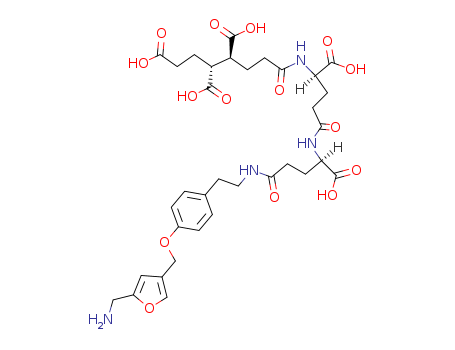- Chemical Name:Cdr factor
- CAS No.:89873-36-9
- Molecular Formula:C34H44 N4 O15
- Molecular Weight:748.741
- Hs Code.:
- Mol file:89873-36-9.mol
Synonyms:7-(((S)-4-(((S)-4-amino-1-carboxy-4-oxobutyl)(4-((5-(aminomethyl)furan-3-yl)methoxy)phenethyl)amino)-1-carboxy-4-oxobutyl)amino)-7-oxoheptane-1,3,4-tricarboxylic acid;7-[[(1S)-4-[[(1S)-4-Amino-1-carboxy-4-oxobutyl]-[2-[4-[[5-(aminomethyl)furan-3-yl]methoxy]phenyl]ethyl]amino]-1-carboxy-4-oxobutyl]amino]-7-oxoheptane-1,3,4-tricarboxylic acid;L-glutamine, N-(4,5,7-tricarboxy-1-oxoheptyl)-L-gamma-glutamyl-N~2~-[2-[4-[[5-(aminomethyl)-3-furanyl]methoxy]phenyl]ethyl]-




